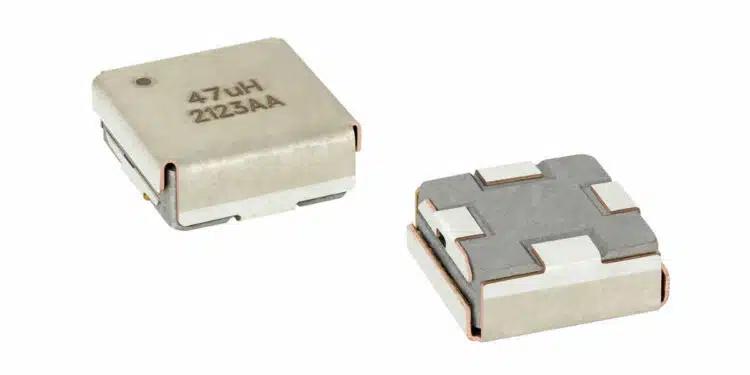Vishay Intertechnology releases second-generation automotive grade IHLE® inductor with integrated EMI shield in 4040 case size.
Vishay Intertechnology, Inc. (NYSE: VSH) expanded its IHLE® series of low profile, high current power inductors featuring integrated E-field shields with a new second-generation Automotive Grade device in the 10 mm by 10 mm 4040 case size.
Offering an improved shield design over previous-generation solutions, and polarity marked for more consistent EMI performance, the Vishay Dale IHLE-4040DDEW-5A lowers costs and saves board space by potentially eliminating the need for separate board-level Faraday shielding.
Compared to traditional composite inductors, the device released today contains the electric and magnetic fields associated with EMI in a tin-plated copper integrated shield. When the shield is connected to ground, the IHLE-4040DDEW-5A provides up to 20 dB reduction in radiated noise interference, and a further 6 dB reduction in magnetic flux leakage to minimize crosstalk to nearby board components. The inductor features continuous high temperature operation to +155 °C and improved operating and isolation voltage ratings of 75 V and 100 V, respectively.
The IHLE-4040DDEW-5A power inductor is optimized for energy storage in switch mode power supplies and provides excellent noise attenuation when used as a DC power line choke. AEC-Q200 qualified, the device is designed for filtering and DC/DC conversion in entertainment / navigation systems; LED drivers; and noise suppression for motors, automotive domain control units (DCU), and other noise-sensitive applications.
Packaged in a 100 % lead (Pb)-free, magnetically shielded, iron alloy encapsulant, the IHLE-4040DDEW-5A offers high resistance to thermal shock, moisture, and mechanical shock from the additional mounting support provided by its two shield terminals. The inductor is RoHS-compliant, halogen-free, and Vishay Green.
Samples and production quantities of the IHLE-4040DDEW-5A are available now, with lead times of 16 weeks.
| Low End | High End | |
| Inductance @ 100 kHz (μH) | 0.47 | 68 |
| DCR typ. @ 25 °C (mΩ) | 1.55 | 240 |
| DCR max. @ 25 °C (mΩ) | 1.66 | 252 |
| Heat rating current typ. (A)(1) | 32 | 2.6 |
| Saturation current typ. (A)(2) | 28 | 3.5 |
| Saturation current typ. (A)(3) | 40.1 | 4.9 |
| SRF typ. (MHz) | 32.0 | 3.5 |
| Case size | 4040 | 4040 |
| Part number | IHLE4040DDEWR47M5A | IHLE4040DDEW680M5A |
- (¹) DC current (A) that will cause an approximate ΔT of 40 °C
- (²) DC current (A) that will cause L0 to drop approximately 20 %
- (3) DC current (A) that will cause L0 to drop approximately 30 %































